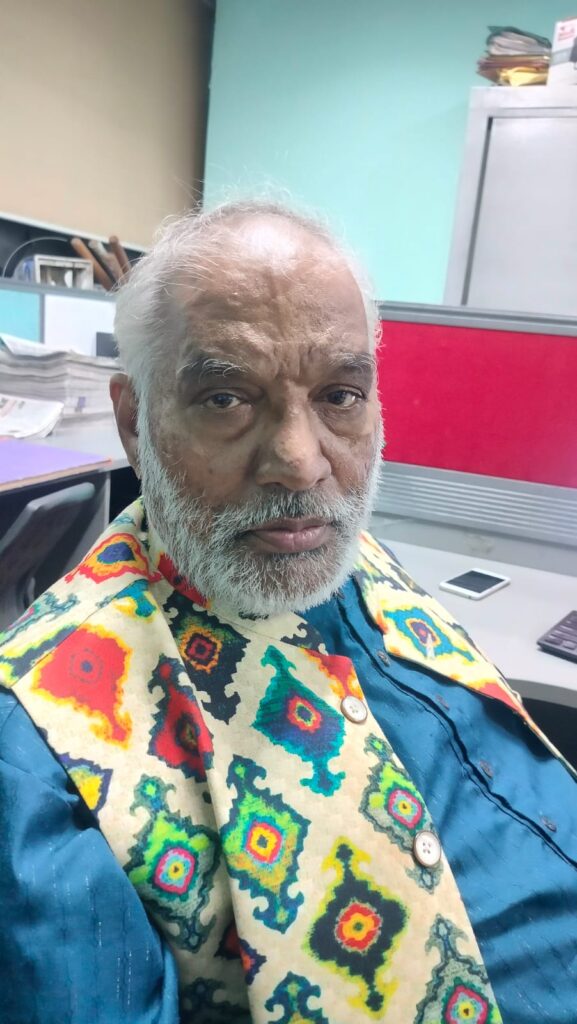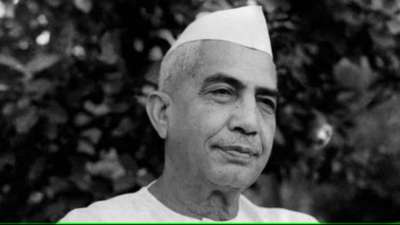Charan Singh was Uttar Pradesh’s first non-Congress chief minister, and went on to become Prime Minister of India in 1979. Regarded as a ‘champion of peasants’, he is credited with creating a new political class encompassing farming communities in North India.

Ravindra Ojha
( response@theemergingworld.in )
New Delhi : Former Prime Minister and iconic Jat leader Chaudhary Charan Singh has been conferred the Bharat Ratna, India’s highest civilian award. “This honour is dedicated to his incomparable contribution to the country… His dedication to our farmer brothers and sisters and his commitment to democracy during the Emergency is inspiring to the entire nation (translated),” PM Narendra Modi posted on X on Friday. Now question arises, why the Bharat Ratna for him is significant.
He was among the tallest leaders of the Congress in UP
Born on December 23, 1903 in a peasant family in Noorpur village near Hapur, Charan Singh entered politics during the national movement. He was elected to the then United Provinces Assembly from Chhaprauli in 1937 on a Congress ticket.
As a people’s representative, he took up issues concerning the village economy, building up a political position against the exploitation of peasants by big landlords. Post-Independence, he was one of the Congress’s most important leaders in UP, becoming MLA from Baghpat West (1952) and Kotana (1957, 1962). As the revenue minister in the cabinet of UP’s first Chief Minister Govind Ballabh Pant, he was instrumental in the implementation of historic legislation for zamindari abolition and land ceiling. Over time, Charan Singh emerged as one of the most popular leaders of North Indian farmer communities such as Jats, Yadavs, Gujjars, and Kurmis, as well as Muslims.
Charan Singh became UP’s first non-Congress CM
By the mid-1960s, North India was in the midst of immense political upheaval, with socialist stalwart Ram Manohar Lohia launching a campaign to oust the Congress from power in UP. In the 1967 Assembly elections, Congress failed to win a majority in the House. With backing from Lohia, Raj Narain, and the Bharatiya Jana Sangh (BJS)’s Nanaji Deshmukh, Chaudhary Charan Singh stepped up to engineer a defection of 16 MLAs in the party. He went on to form UP’s first non-Congress coalition government.
He was sworn in as CM on April 3, 1967, heading the coalition Samyukt Vidhayak Dal (SVD) government comprising his newly-floated Bharatiya Kranti Dal (BKD), and various Opposition parties ranging from the BJS to the Left parties. The BJS’s Ram Prakash Gupta was his Deputy CM, along with Gurjar leader Ram Chandra Vikal. Charan Singh’s first tenure as the CM however, lasted only until February 25, 1968, with his coalition effectively falling apart.
After a year of President’s rule, UP saw fresh Assembly polls in 1969, and Chandra Bhanu Gupta returned as CM. Within a year, however, the Congress split between the Congress (O) and the Congress (R), and the government fell. This paved the way for Charan Singh’s return as CM — this time with the help of Indira Gandhi’s Congress (R). He took oath on February 18, 1970, but again faced difficulty in keeping his coalition alive. He would quit on October 1, 1970, following which UP saw the imposition of President’s Rule once again.
His entry into national politics
While still active in UP politics, Charan Singh contested the 1971 Lok Sabha polls on the BKD ticket from Muzaffarnagar, and lost to the CPI’s Vijaypal Singh. He would finally make inroads in national politics after the Emergency, winning the 1977 Lok Sabha elections from Baghpat on the Janata Party ticket. He became the Deputy PM in the new government led by Morarji Desai. Two years later, Charan Singh defected from the Janata Party to form a new outfit, the Janata Party (Secular). This would propel him to the position of PM on July 28, 1979 with the support of Indira Gandhi. But, after just 23 days, Indira withdrew support from his government.
Charan Singh remained in the post until January 14, 1980, when Indira Gandhi returned as the PM following fresh general elections. He remains one of only two Chief Ministers of UP, alongside V P Singh, who became PM. Charan Singh won from Baghpat on the Janata Party (S) ticket in the 1980 Lok Sabha elections, and then again in 1984 as the candidate of his new outfit Bhartiya Lok Dal (BLD). He passed away on May 29, 1987.
A champion of the peasants
Chaudhary Charan Singh is often hailed as one of India’s tallest Jat leaders. Today, the politically powerful Jats have the potential of influencing results in nearly 40 Lok Sabha seats and around 160 Assembly seats, spread across UP, Haryana, Rajasthan and Delhi. He remains UP’s only Jat CM ever. However, his influence transcended just the Jat community. Widely acknowledged as a champion of peasants, Charan Singh has been credited with creating a new political class encompassing the farming communities in North India, with his influence felt even today. With an eye on Jats vote spread across 4 states decisive in 40 Lok Sabha, 160 Assembly seats. This is widely perceived as the main reason behind awarding Bharat Ratna to Chaudhary Charan Singh.
Jayant Confirms an alliance with BJP
New Delhi : Grandson of late Charan Singh and RLD chief Jayant Chaudhary has confirmed an alliance with the BJP for the 2024 Lok Sabha election in Uttar Pradesh, following the announcement of his grandfather, former Prime Minister Chaudhary Charan Singh, being awarded the Bharat Ratna. Expressing his sentiment, Chaudhary stated, “How can I refuse the offer now?” He attributed his decision to the acknowledgment of his grandfather’s contributions and Prime Minister Modi’s vision, which he believes aligns with the nation’s sentiments. The alliance deal marks a setback for the Opposition INDIA bloc.
Under the agreement, the RLD will contest two Lok Sabha seats, Baghpat and Bijnor, and has been assured a Rajya Sabha seat. The BJP anticipates leveraging RLD’s influence in western Uttar Pradesh, particularly among the Jat community. Notably, in the 2019 Lok Sabha elections, the BJP faced setbacks in the region, losing all six seats in the Moradabad division. The alliance signals a strategic move by both parties to consolidate support and maximize electoral gains in the upcoming polls.


